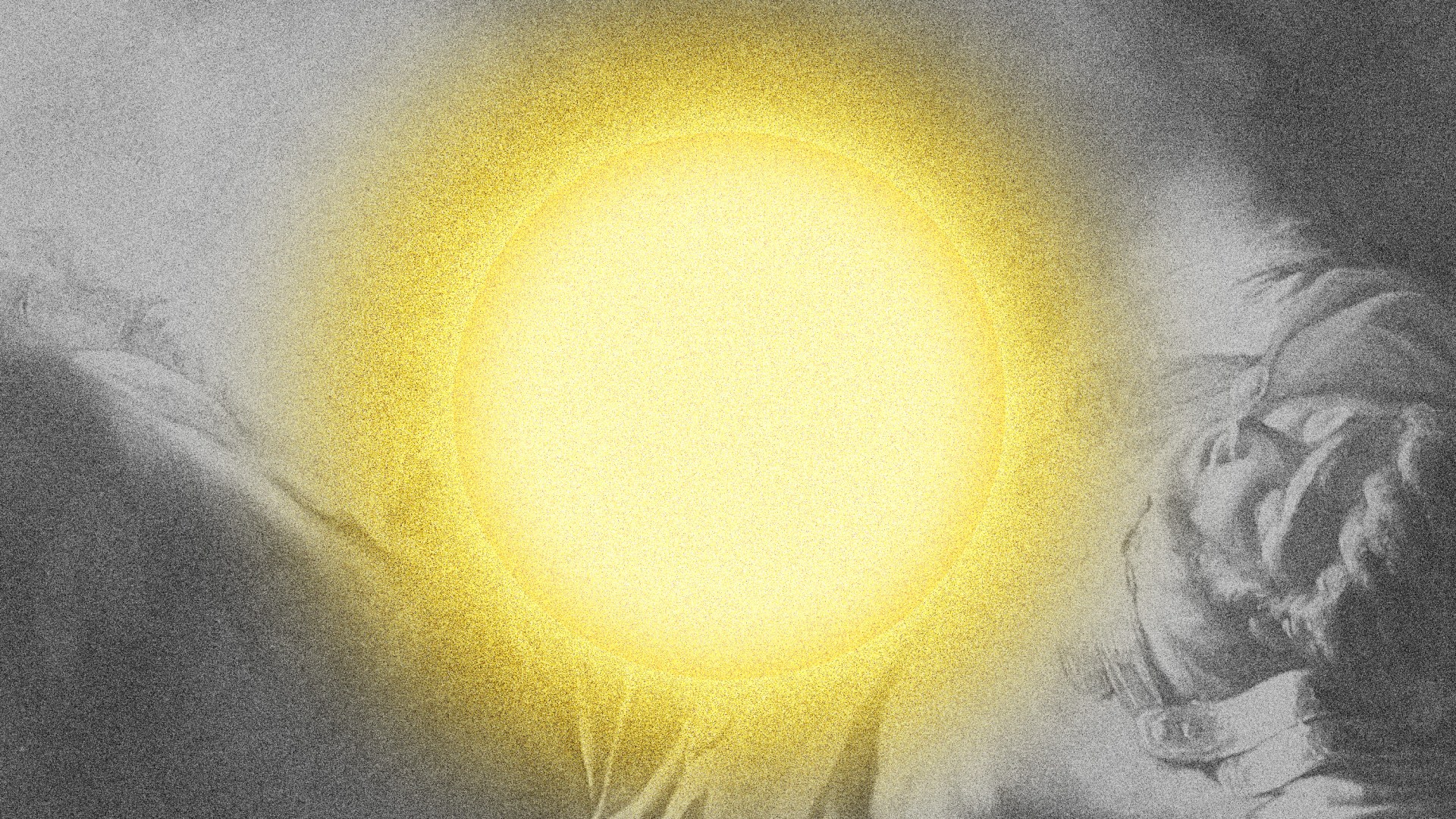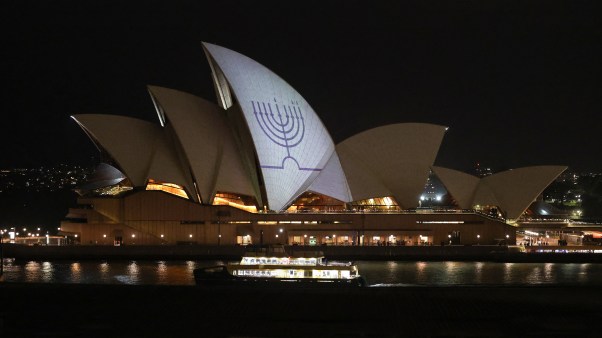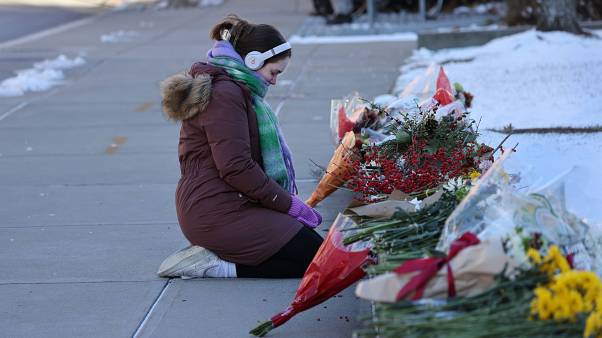I live six blocks from the Pacific Ocean. A desirable location for most. But not for me. When my husband and I walk to the beach in the evenings, as the sun dips beneath the horizon, I never look straight ahead. Instead, I watch the surrounding clouds change colors. That’s all I can bear to see of a sunset: the back of it as it passes me by.
Chronic migraine disorder involves being in pain more often than not, and the stress that this pain induces on the nervous system means that sufferers often struggle with a variety of neurological symptoms. One of my most annoying symptoms is extended periods of photophobia, or light sensitivity.
Yet it’s much more than a “sensitivity,” in my opinion. Photophobia is a barbed wire fence wrapped around my entire world. It turns car headlights and TV screens into flame throwers and laser beams. iPhone flashlights (which people accidentally turn on all too often) drill straight into my skull. I can’t even tolerate regular light bulbs unless they are completely covered by shades.
So, you can probably imagine how I feel about the sun, the biggest light bulb of all, and the ocean, the world’s largest mirror.
Every day I’m reminded that my chronic pain turns good and beautiful things that other people enjoy, like summer or campfires or Christmas decorations, into sources of frustration and fear. And that has spiritual implications.
The first time I noticed this wasn’t while taking in a sunset but while sitting in church. My San Francisco congregation is small and frequently moves from place to place; at the time I first got sick, we met in a conference center with LED track lighting, like what you’d find in a fashion outlet store. Each fixture pointed in a slightly different direction, leaving me with no escape from the overwhelming brightness. The lights near the pulpit were the worst of all. So, during my first year of chronic pain, I spent most Sunday services looking at the floor. (Later on, my church met in a ballroom lit by two giant spotlights. I can’t decide which was worse.)
How was I supposed to engage with people in my church community when I was so preoccupied with avoiding the lights? Connecting with God proved even harder. After all, wasn’t he the one who allowed this sickness that made church so inaccessible to me? I felt like I was being punished for obeying the command not to give up on meeting together (Heb. 10:24–25).
My difficulties with church were just the tip of the iceberg. What I found even more concerning was how quickly and completely my pain choked out every other aspect of my spiritual life. I was usually too distracted by pain to pray, but on the rare occasion that I did, I was unable to conjure even the mere idea of God. It was like talking into thin air.
Reading Scripture was difficult too. God’s Word had always been my map. But now, whenever I opened it, I found myself circling around the same handful of psalms, all of which were laments or complaints. Psalm 88, for example:
Your wrath has swept over me;
your terrors have destroyed me.All day long they surround me like a flood;
they have completely engulfed me.You have taken from me friend and neighbor—
darkness is my closest friend. (vv. 16–18)
Whenever I tried branching out, I was confused by the Bible’s frequent references to God as loving, good, and beautiful. This was not the God I knew, at least not anymore. All of the many exhortations to “Praise the Lord!” rang hollow. The map was muddled now, providing directions to a foreign land where I didn’t live and couldn’t possibly belong.
C. S. Lewis wrote that “God whispers to us in our pleasures, speaks in our conscience, but shouts in our pain.” So, though I never went looking for solutions to the crisis created by my chronic pain—most likely because I doubted there was anything to learn, spiritual or otherwise, from my suffering—the answers found me nonetheless.
Over my ringing ears, pounding head, and certainty that pain was all curse and no blessings, I started to hear God shouting something I’d never heard before.
Ezekiel saw the glory of the Lord as a figure that from the waist up “looked like glowing metal, as if full of fire, and that from there down … looked like fire; and brilliant light surrounded him.” When the prophet saw this, he fell to the ground (Ezek. 1:27–28).
During the Transfiguration, Jesus’ face “shone like the sun, and his clothes became as white as the light” as the Father spoke to the disciples out of a “bright cloud” (Matt. 17:2, 5). The disciples ended up face-down on the ground too.
The apostle Paul’s conversion involved a light from heaven that was so bright, it struck him blind, and—you guessed it—he “fell to the ground” (Acts 9:4).
Before getting migraines, I knew these stories, and I knew their shared message: God’s glory is so bright and beautiful, it totally overwhelms those who encounter it. What I didn’t fully take in back then, however, was the physical circumstances these stories likewise shared. They all involved the glory of God manifesting as a light so bright, the witnesses reflexively recoiled. Put another way, these are all examples of divine photophobia.
My photophobia is not the result of a divine encounter, as it was with the apostle Paul. But the discovery of this aspect of my physical experience in Scripture relocated parts of me that had been lost for too long. I still understood so little about God, still felt so far from him in many ways. But when it came to these stories about his blinding glory—or other parts of the Bible that described God as surrounded by light—I realized that by experiencing photophobia, I was, in some small way, able to feel God’s glory in my body. It was as if, on the map, God had drawn an X next to Paul on the road to Damascus or an arrow labeled “You Are Here” pointing to the mountaintop with the disciples.
Perhaps I could connect with God in spite of—no, because of—my pain, and perhaps the photophobia I’d considered a spiritual barrier was actually an invitation into a deeper understanding of my Savior that went straight to my neurons. As I continued to squint beneath the bright lights on Sunday mornings, I was comforted by the possibility that my symptoms were, somehow, holy.
On a recent trip up the California coast, my husband and I decided to pull over to eat lunch on a beach. It was late fall, so the sun glanced off the water even that early in the day, forcing me to tip the brim of my hat down until I couldn’t see the ocean. This was an inconvenience I would usually grumble about, but much to my surprise, I found myself enjoying the sound of the waves and the warmth of the salty air. And as I ate a sandwich we’d picked up at a drive-through, I found myself thinking about how God’s radiance is more than our eyes can behold, just as the sight of the sun hitting the ocean at that moment was more than my eyes could behold.
Would I rather have been able to look directly at the ocean, to fully take in God’s marvelous creation? Yes, definitely. But in the absence of that, I was thankful that divinity can exist alongside difficulty and suffering alongside the sacred.
That day on the beach also gave me a new understanding of Christ and his grace. Jesus’ sacrifice is our only protection from the overwhelming, overpowering glory of God; Jesus is the shade at our right hand that allows us to boldly approach the throne of unapproachable light (Ps. 121:5; 1 Tim. 6:16). Or, to put this in terms a photophobe would understand: Jesus is my hat on the beach, my sunglasses on a bright day, and the colorful clouds surrounding the world’s greatest sunset.
Jesus is also the light of heaven, the sun of the New Jerusalem. And I know that when I see him there, I won’t mourn the sunsets I missed.
Natalie Mead is currently pursuing an MFA while writing a memoir about chronic pain, relationships, and faith. Read more of her writing at nataliemead.com.


















